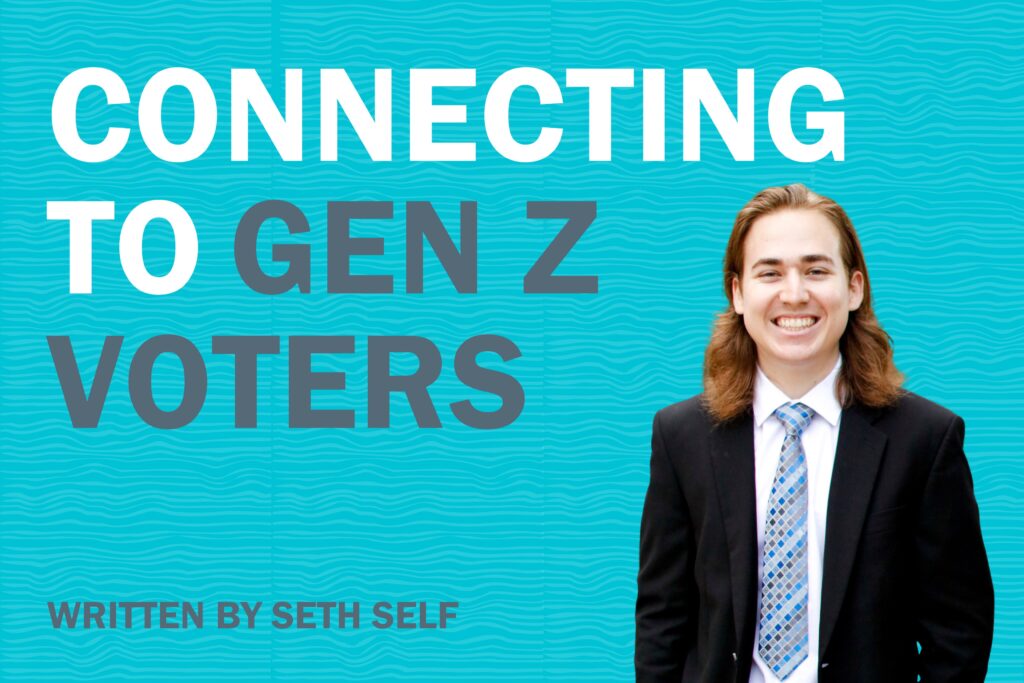Connecting to Gen Z Voters

At a July 2016 campaign rally in Virginia, Democratic nominee for president Hillary Clinton told her audience to “Pokémon Go to the polls!”
Her reference was to the app Pokémon Go, a multiplayer game that went viral among young people earlier that year for its social aspects and interactive gameplay.
The presidential candidate was seemingly baffled by the lack of enthusiasm among young voters in the 2016 election. By mentioning a game that earned its popularity from this target group, Clinton hoped to generate similar waves of engagement for her candidacy.
Clinton was not the first candidate to try to appeal to young voters; for example, her own husband, former President Bill Clinton, appeared on MTV to talk with young voters ahead of his 1992 presidential campaign.
And as the 2022 midterms approach in November, the topic of how to motivate young people to vote is once again a source of discussion among political candidates. You might be wondering what any of this has to do with public relations or communication.
There is one overarching answer: social media.
Throughout the 2022 election cycle thus far, multiple candidates have taken advantage of social media to bolster their public relations images and connect with young voters (those aged 18-29). Mostly members of Generation Z, individuals in this voting cohort make up the most online generation in history.
Instead of dropping a pop culture reference at a campaign rally, politicians are now connecting with younger voters on social media platforms.
For most members of Gen Z, the only other election during which they were of voting age was the 2020 presidential race that saw much campaigning done virtually due to the COVID-19 pandemic. Therefore, the use of online media has become even more important in reaching this demographic.
Some examples of campaigns using social media to connect with Gen Z voters and improve their candidates’ images this cycle are those of John Fetterman, candidate for Senate in Pennsylvania, and Florida Governor Ron DeSantis.
Fetterman has gone viral for his use of Twitter in campaigning against his opponent, Dr. Mehmet Oz. Such examples include a viral tweet of a meme in which he “ratioed” Dr. Oz, which means he received more likes or impressions on his tweet than the original tweet to which he was replying. While it appears the original tweet has been taken down, it was effective in generating online attention for his candidacy among young voters on Twitter.
As for Governor DeSantis, the Florida politician attempted to ride the popularity of this summer’s hit movie “Top Gun: Maverick” by filming a unique campaign advertisement featuring the governor inside a fighter jet. The ad was released and later went viral on social media.
These candidates’ actions strategically targeted specific groups of people. Fetterman’s tweet was crafted with the intention of drawing engagement from people who spend a sizable amount of time-consuming pop culture via social media, and the phrasing and punctuation were deliberate in connecting with the young voters his campaign desires to attract. Meanwhile, DeSantis’ advertisement appealed to younger voters who identify as patriotic or strong on defense, as well as those who had seen the movie. Both campaigns’ actions were deliberately planned to improve the candidates’ images with regard to particular values.
It’s important for PR professionals to keep these strategies of utilizing social media in mind while working on political campaigns, even if such strategies can be a bit unorthodox. After all, conventional wisdom for public relations might not support tweeting “ratio” at an opponent, but after Fetterman’s continued success at social media trolling, perhaps it’s something worth considering!
Time will tell if these communication strategies will be successful in improving youth voter turnout. If you’re a member of Gen Z like me, have these tactics worked to convince you to “Pokémon Go to the polls” this November?

Seth Self is a senior majoring in public relations at The University of Alabama, where he serves as an editor and writer for Platform Magazine, a PR publication sponsored by The University of Alabama Plank Center dedicated to all things public relations. Seth is also involved as an ambassador for his college and has recently served as a PR intern for Black Warrior Riverkeeper this past summer.
